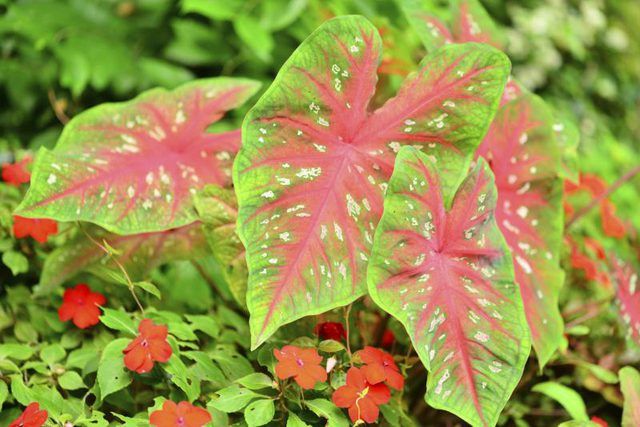Bulbs
Flower Basics
Flower Beds & Specialty Gardens
Flower Garden
Garden Furniture
Garden Gnomes
Garden Seeds
Garden Sheds
Garden Statues
Garden Tools & Supplies
Gardening Basics
Green & Organic
Groundcovers & Vines
Growing Annuals
Growing Basil
Growing Beans
Growing Berries
Growing Blueberries
Growing Cactus
Growing Corn
Growing Cotton
Growing Edibles
Growing Flowers
Growing Garlic
Growing Grapes
Growing Grass
Growing Herbs
Growing Jasmine
Growing Mint
Growing Mushrooms
Orchids
Growing Peanuts
Growing Perennials
Growing Plants
Growing Rosemary
Growing Roses
Growing Strawberries
Growing Sunflowers
Growing Thyme
Growing Tomatoes
Growing Tulips
Growing Vegetables
Herb Basics
Herb Garden
Indoor Growing
Landscaping Basics
Landscaping Patios
Landscaping Plants
Landscaping Shrubs
Landscaping Trees
Landscaping Walks & Pathways
Lawn Basics
Lawn Maintenance
Lawn Mowers
Lawn Ornaments
Lawn Planting
Lawn Tools
Outdoor Growing
Overall Landscape Planning
Pests, Weeds & Problems
Plant Basics
Rock Garden
Rose Garden
Shrubs
Soil
Specialty Gardens
Trees
Vegetable Garden
Yard Maintenance
Are Caladiums Annuals or Perennials?
Are Caladiums Annuals or Perennials?. Caladiums (Caladium bicolor) are perennial tubers, often grown as annuals in colder climates. The South American natives are hardy as perennials in U.S. Department of Agriculture plant hardiness zones 9 through 10, dying back in winter and reemerging in spring. The large-leaved plants, also known as angel...

Caladiums (Caladium bicolor) are perennial tubers, often grown as annuals in colder climates. The South American natives are hardy as perennials in U.S. Department of Agriculture plant hardiness zones 9 through 10, dying back in winter and reemerging in spring. The large-leaved plants, also known as angel wings, provide a colorful, tropical backdrop in partial- and full-shade gardens. While caladiums are grown for their colorful foliage, calla-like blossoms may appear under the leaves.
Starting Caladiums
While caladiums overwinter outdoors in warm climates, gardeners in cold winter areas start the new season's plants in flowerpots with drainage holes, approximately six to eight weeks before the last frost date. Plant the tubers in organically rich potting soil with the pointed side up, 1 to 2 inches deep. Place the flowerpots in a warm location, such as a sunny windowsill at 70 to 75 degrees Fahrenheit, and keep the soil moist while the new leaves sprout.
If you plan to dig up the caladiums at the end of summer, consider planting each tuber in a 6- to 8-inch plastic flowerpot and bury the entire pot, plant and all, outside instead of transplanting the plant. This allows you to snip off the dead foliage at the end of summer and lift the pot before the first frost. Remove the tubers from the pot, brush the dirt off and store them in a dry location at 60 degrees F for the winter. Caladiums don't need a cold period; do not refrigerate the tubers. Replant the tubers in spring.
Prepare the Outdoor Site
Select a location in the garden that enjoys partial, dappled or full shade. Dig in 1 to 2 inches of compost and an equal amount of peat moss to a depth of 6 to 8 inches. Caladiums prefer a soil pH between 5.5 and 6.2; the peat moss helps add acidity and organic matter. Dig a hole for each tuber, 8 to 14 inches apart, depending on the variety. Plant each tuber deep enough so the pointed tip rests 1 to 2 inches below the soil. Fill in the hole and tamp gently.
Plant the Caladium
Dig planting holes in the garden, 8 to 14 inches apart. Carefully loosen the caladium and remove it from the pot. Place it in a hole at the same soil level, being careful to not disturb the tuber inside the rootball. Tamp the soil gently around the newly planted caladium and water thoroughly. Add a 2- to 3-inch layer of mulch over the garden bed, pulling it back 3 to 4 inches from the plant's stem.
Caladium Care
Water when the soil under the mulch is almost dry to the touch. Caladiums thrive in moist, well-drained locations. Allowing the roots to dry out may throw the tubers into winter dormancy.
Fertilize after watering every two weeks, using an all-purpose 12-4-8 or 10-10-10 liquid fertilizer, mixed at 1 tablespoon per gallon of water. Apply 1 gallon of fertilizer solution to every 10 square feet of soil. When the foliage begins to die back in fall, stop watering and fertilizing until new leaves appear in spring.
Monitor the leaves for snails and slugs, which are easily hand-picked from the leaves or trapped under boards in the morning.
More About Caladiums
The familiar Caladium bicolor plants are divided by two leaf shapes, fancy and lance. The rounded fancy leaves, green around the edges and colorful in the center, are sported by a number of varieties, including "White Christmas," "Red Flash," "Pink Beauty" and "Miss Muffet." The lance-shaped are thinner and pointed, and include "White Wing," "Red Frill" and "Pink Gem."
While caladiums are an easy-care addition to a shade garden, they are toxic to dogs and cats. Installing a fence or other barrier keeps your pets away from the leaves.